How to Boost Your ABIM Internal Medicine Certification Exam Score by 100 Points

There are many tactics you can use when preparing to take a standardized exam such as the Internal Medicine In-Training Exam™ (IM-ITE™) or ABIM Board Certification Exam. But there are two easy strategies I found to be the most useful.
The first strategy is to identify what you don’t know. Sounds easy, right? The key is to go through a curriculum and identify what you don’t know—not what you are weak at, but what you don’t know. The second strategy is to take advantage of human error. Tests are written by humans, and humans make errors. By paying attention to five types of flaws that question writers make, you can narrow down an answer choice to either the correct answer or a 50/50 probability, even without knowing anything about the topic. By combining these two strategies, you’ll be able to increase your ABIM Board Certification Exam score by 100 points, which could be the difference between passing or failing. Let’s get started.
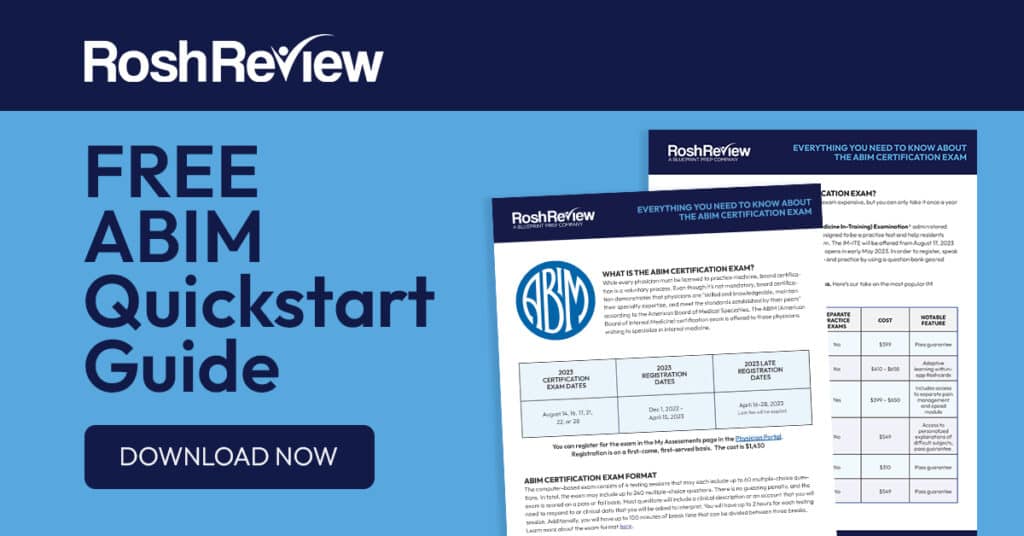
Studying for the ABIM board exam in 2024? Download the FREE ABIM Quickstart Guide with exam information, high-yield topics, and more!
Strategy 1: Determining your unknown unknowns
As you begin to study for your exam, you’ll find that there are areas you are comfortable with. Maybe you have a special interest in pulmonology and feel confident with any question that might be asked on interpreting spirometry results. Because you are confident in pulmonology, you spend less time reviewing it. Let’s call this one of your known knowns. There is little utility in spending too much time on your known knowns when preparing for your exam.
When I was a PGY1 resident, my understanding of multiple myeloma was poor. Multiple myeloma was just a term to me. I didn’t understand how or why it occurred, what the complications of the disease were, and I didn’t know how to diagnose or treat it. Multiple myeloma was a known unknown. Because I recognized this specific deficiency, I was able to target my learning to study monoclonal gammopathies.
Once I started to focus my learning, I came across many concepts and ideas that I knew nothing about…never even heard about some of them. These were the unknown unknowns, a concept created by psychologists Joseph Luft and Harrington Ingham. It is part of their “Johari window,” a tool that helps users identify blind spots about themselves and others.
Known unknowns are things you’re aware that you don’t know—you can recognize that you don’t understand them. Unknown unknowns, however, are unexpected because you don’t know they exist.
The way to supercharge your internal medicine board exam or IM-ITE score is to identify your unknown unknowns. It takes a little effort, but the steps are rather easy. All you need are two things:

The system works like this:
Step 1: Answer a question from a question bank. If you get the answer wrong, read the explanation. Then write down in your notebook the part of the explanation that describes why the correct answer is correct. This process helps to identify your unknown unknowns. Subsequently, if there is any other information that you did not know or somewhat knew, record it in your notebook under the same topic.
You should do this for every question you get incorrect. I also encourage it for questions you may have answered correctly but discovered new information in the explanation that you previously did not know.
Step 2: Start each study session by reviewing your notebook that contains your unknown unknowns. As you do more questions, you will get questions wrong on topics already recorded in your notebook. For example, if you answer a question incorrectly on the epidemiology of de Quervain tendinopathy, you’ll record something like “de Quervain tendinopathy: Epidemiology includes women between 30–50 yrs old and postpartum.” Two weeks later, if you can’t name the diagnostic test characterized by thumb flexion and ulnar deviation of the wrist, you should go back through your notebook to find your first entry on de Quervain tendinopathy and add the “Finkelstein test” as the way to diagnose the condition. While we’re on the topic, here’s a cheat sheet for de Quervain tendinopathy.
After a month or two of recording your incorrect answer explanations, you will have a filled notebook of your unknown unknowns and maybe many of your known unknowns. If you do this consistently and get through 1,000 to 2,000 question bank questions, you’ll identify most of your blind spots. You will convert your unknown unknowns to known knowns.
Here are my notes by category that I used for my internal medicine recertification exam. Loose sheets work just as well as a notebook.
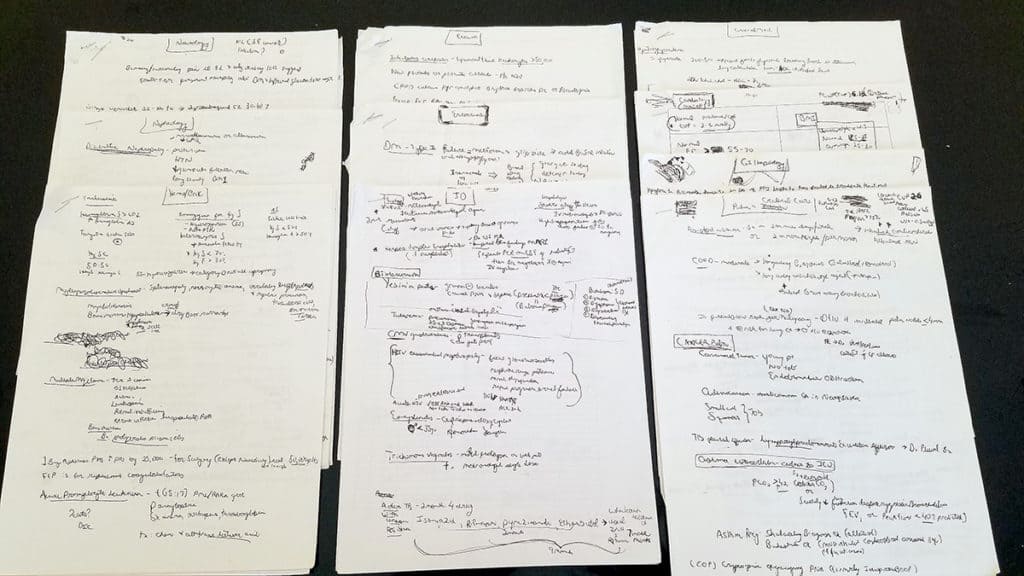
The sheets are filled with explanations from questions I answered incorrectly. I even used it to learn how to read ECGs better than a cardiologist.
I used the same system and process to prepare for my MCAT, USMLE Step exams, ITEs, initial Rheumatology and Internal Medicine Board Exams, and recertification exams.
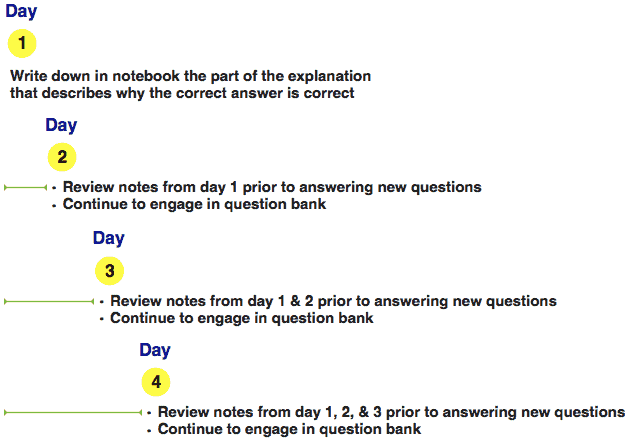
With the IM-ITE and Internal Medicine Certification Exam right around the corner, now is the perfect time to begin this system. It leaves time for adjustment and plenty of time to accumulate your unknown unknowns.
Strategy 2: Taking advantage of human error
Earlier in this post, I mentioned that you’ll need two things to supercharge your standardized exam score: a notebook and time. The notebook you can buy anytime. However, time disappears.
Taking the time to identify your unknown unknowns will prepare you for the exam. But, we know five ways you can improve your score simply by showing up to your exam.
You can use the errors made by question writers to boost your score.
The Anatomy of a Question
First, let’s understand the anatomy of a question.
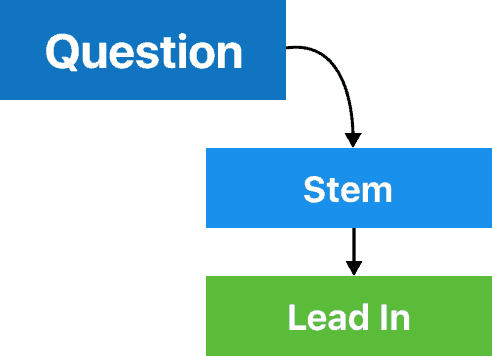
A 22-year-old man with a history of asthma presents to his primary care physician for a checkup. Since his last visit, he has experienced a cough, difficulty breathing, and weight loss. He drinks two to three glasses of wine per week, smokes one to two cigarettes per week, and denies any drug use. Auscultation reveals wheezing, and pulmonary function tests show an increased total lung capacity. Echocardiography is unrevealing. Serum analysis demonstrates elevated liver transaminases. Which of the following is the most likely diagnosis?
A question is made up of the stem and the lead-in. The stem contains the details of the question such as the clinical presentation, past medical history, and laboratory results. But, the critical part of the question is the lead-in. The question writer uses the lead-in to find out what you know or don’t know about the topic in the stem. But, it is also where question writers make errors. By applying basic grammatical analysis, you will be able to identify the correct answer or at least narrow down the answer choices without knowing anything about the topic. Here are our first two tips:
1. Pay attention to grammatical cues.
Grammatical cues: one or more answer choices (distractors) don’t follow grammatically from the lead-in.
A 25-year-old woman presents to your clinic with concerns about sexually transmitted infections. She reports that she had unprotected intercourse with multiple partners. She is asymptomatic, but her last partner told her that he recently tested positive for chlamydia. The most appropriate next step is administration of which of the following?
A. Azithromycin
B. Obtaining a urine sample
C. Penicillin
D. Vaginal swabbing
B and D do not follow grammatically from the lead-in. A good test taker can eliminate these.
2. Focus on logical cues.
Logical cues: one or more answer choices don’t logically fit in with the other choices.
A 22-year-old man is concerned he has appendicitis. Which of the following signs is most sensitive for the diagnosis of appendicitis?
A. Nausea
B. Pain with extension of the hip joint
C. Rebound tenderness
D. Right lower quadrant tenderness
Nausea is not a “sign” and can be eliminated by a good test taker.
Let’s now focus on answer choices to identify a few more areas where we can gain an edge.
The Anatomy of Answer Choices
QUESTION: A 22-year-old man with a history of asthma presents to his primary care physician for a checkup. Since his last visit, he has experienced a cough, difficulty breathing, and weight loss. He drinks two to three glasses of wine per week, smokes one to two cigarettes per week, and denies any drug use. Auscultation reveals wheezing, and pulmonary function tests show an increased total lung capacity. Echocardiography is unrevealing. Serum analysis demonstrates elevated liver transaminases. Which of the following is the most likely diagnosis?
A. Alpha-1 antitrypsin deficiency
B. Chronic bronchitis
C. Idiopathic pulmonary arterial hypertension
D. Viral upper respiratory infection
The lead-in asks about the most likely explanation, so think carefully through each answer option. Here are the distractors:
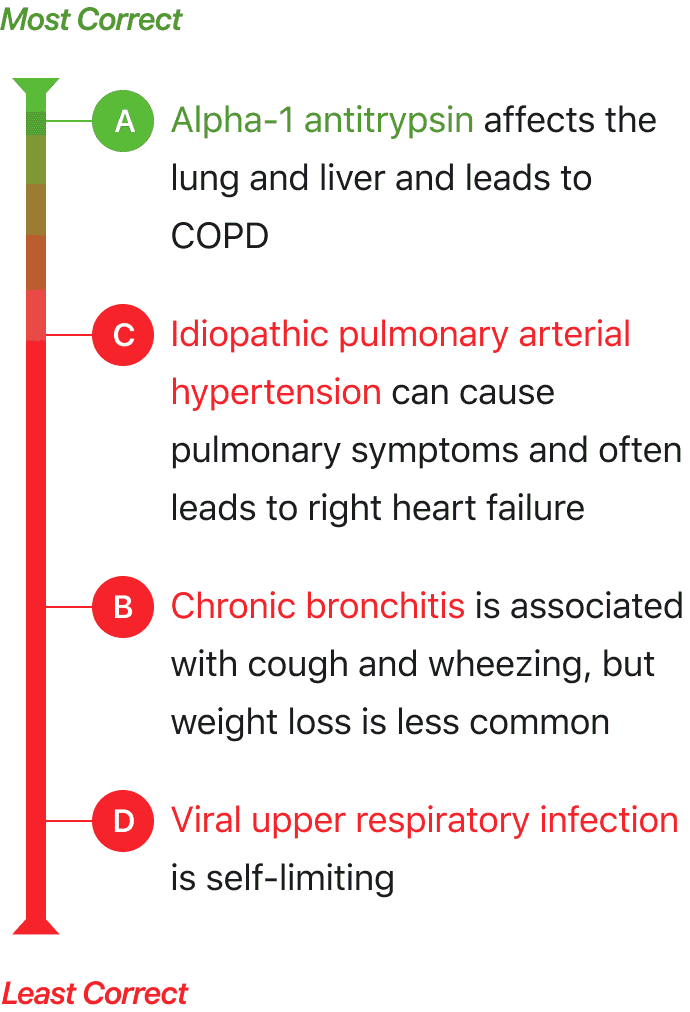
Once you understand the goal of the question writer to create answer choices that are supposed to discriminate knowledge, it is easier to exploit technical flaws and improve the odds of getting a question correct. The following three pointers round out our five tips that can help you answer a question correctly:
3. Look for answer choices containing absolute terms.
Absolute terms: terms such as “always” or “never.” When used in the answer options, these terms usually indicate an incorrect answer because they cannot hold up to scrutiny in all situations.
In patients with advanced Alzheimer disease, which of the following best characterizes the memory defect?
A. Can be treated adequately with phosphatidylcholine
B. Could be a sequela of early parkinsonism
C. Is always severe
D. Is never seen in patients with neurofibrillary tangles at autopsy
C and D contain absolute terms “always” and “never.” These should be avoided in answer choices because they are less likely to be true statements.
4. Keep an eye out for a long correct answer.
Long correct answer: the correct answer is longer, more specific, or more complete than the other options.
Secondary gain is which of the following?
A. A complication of a variety of illnesses and tends to prolong many of them
B. A frequent problem in obsessive-compulsive disorder
C. Commonly seen in organic brain damage
D. Synonymous with malingering
Option A is longer than the other options, and it is also the only double option. Item writers tend to pay more attention to the correct answer than to the distractors and write long correct answers that include additional instructional material, parenthetical information, and caveats.
5. Notice when a word repeats.
Word repeats: a word or phrase is included in the stem and in the correct answer.
A 58-year-old man with a history of heavy alcohol consumption and previous psychiatric hospitalization is confused and agitated. He speaks of experiencing the world as unreal. What is the term for this symptom?
A. Depersonalization
B. Derailment
C. Derealization
D. Focal memory deficit
This question uses the term “unreal” in the question stem, and “derealization” is the correct answer.
Taking the time to identify your unknown unknowns will not only help you prepare for and excel on your exam, it will help you expand your core knowledge. Then, on test day, use the five simple techniques outlined here to identify common flaws in questions, which will increase your chances of getting a question correct.
Give this method a try and let me know how it goes. And if you are looking for an internal medicine board review question bank…you know where to find one.
Best,
Shari Weisenfeld, MD




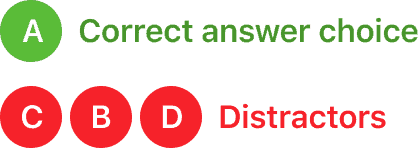

Comments (0)